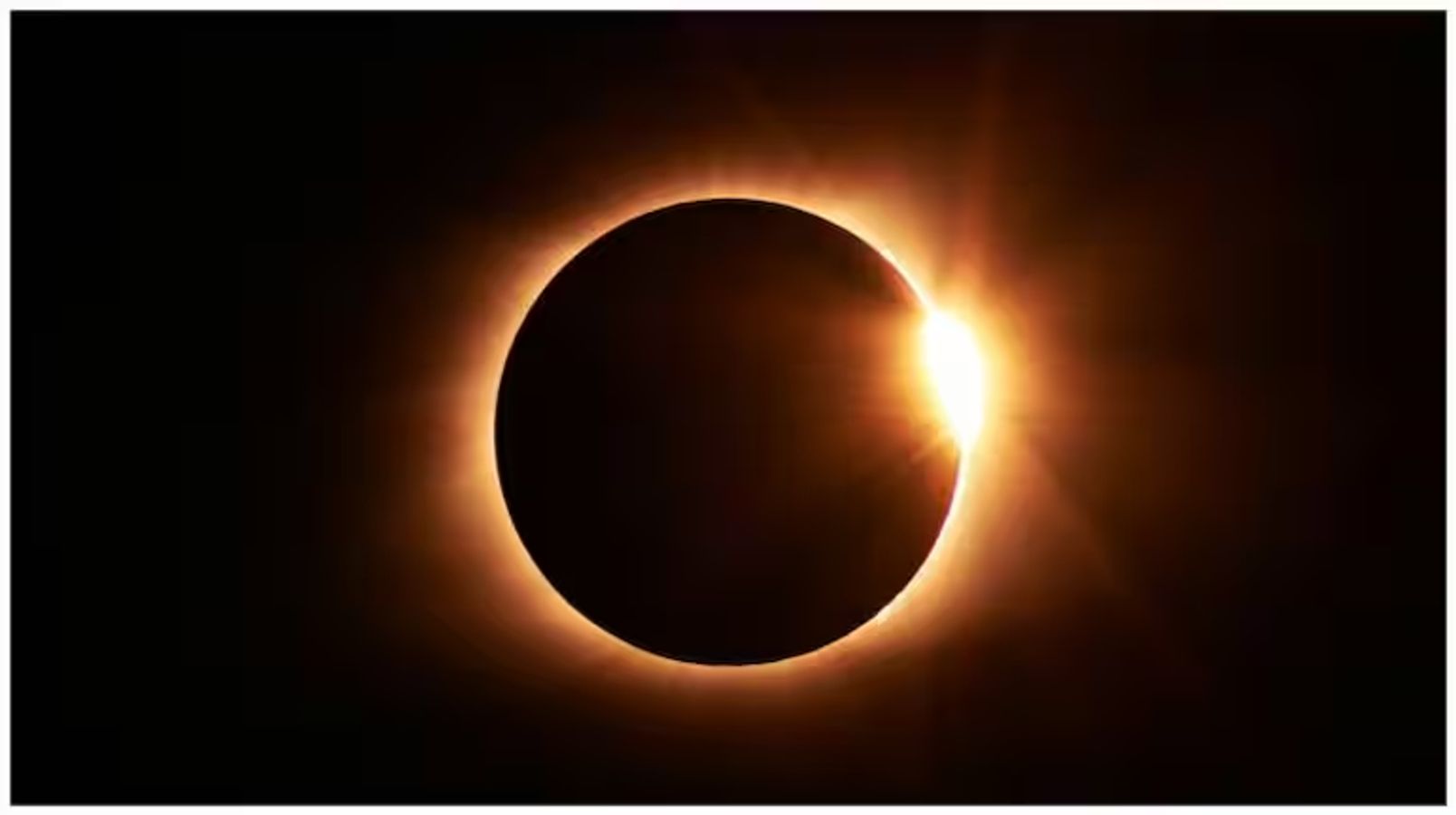On September 21, 2025, a solar eclipse will take place. It will be visible from parts of the Southern Hemisphere, including New Zealand, Antarctica, and nearby islands. This eclipse is called a partial solar eclipse. That means the Moon will cover only a part of the Sun. It will look like a small "bite" has been taken out of the Sun's surface. A solar eclipse happens when the Moon moves between the Earth and the Sun. Depending on how they line up, we see different types of eclipses.
There are three main types of solar eclipses: total, annular, and partial. Each one looks different and depends on how much of the Sun is covered. In this article, we'll take a look at the various types of solar eclipses. We'll explain how they happen, what makes each one special, and where you can see them.
What Are The 4 Types Of Solar Eclipses?
There are four main types of solar eclipses. Each event occurs depending on the alignment of the Sun, Moon, and Earth, as well as the Moon's distance from Earth. Here are the types, with what makes each one special:
1. Total Solar Eclipse

- The Moon passes directly between Earth and the Sun and is close enough that its apparent size is large enough to cover the Sun's disc completely.

- Observers in the path of totality see the Sun entirely blocked, darkness falls, and the solar corona becomes visible.
2. Annular Solar Eclipse

- The alignment is good, but the Moon is a bit farther from Earth, so it appears smaller than the Sun. Because of that, it doesn't cover the Sun completely.

- At maximum eclipse, you see the "ring of fire" (a bright ring of sunlight around the Moon).
3. Partial Solar Eclipse

- The Sun, Moon, and Earth are not perfectly aligned, so only part of the Sun is obscured by the Moon.

- This can be seen over a wider area — even places not directly in the path of totality or annularity may see a partial eclipse.
4. Hybrid Solar Eclipse (also called Annular-Total)

- This is a rare combination: along different parts of its path, the eclipse appears as annular in some places and total in others.

- The shift depends on the curvature of the Earth and the distance of the Moon, so some viewers see the Moon completely covering the Sun, while others see the ring-of-fire effect.
Upcoming Eclipse Examples
| Date | Type | Where Visible / Notes |
| September 21, 2025 | Partial | Visible from Australia, Antarctica, parts of the Pacific Ocean and the Atlantic Ocean. |
| February 17, 2026 | Annular | Annularity is visible in Antarctica. A partial eclipse will also be seen from southern Africa, parts of South America, Madagascar, etc. |
| August 12, 2026 | Total | Path of totality goes through Greenland, Iceland, Spain, Russia, and just touches Portugal—partial eclipses are visible over wider areas of Europe, parts of North America, the Arctic Ocean, etc. |
| February 6, 2027 | Annular | The path of annularity crosses Chile, Argentina, Uruguay, and Brazil. |
When Will The Next Solar Eclipse Happen?
In 2025 and 2026, skywatchers will witness remarkable solar and lunar eclipses worldwide. From rare total and annular solar eclipses to striking lunar events, these celestial displays offer breathtaking opportunities for observation.
Solar Eclipses
| Date | Solar Eclipse Type | Geographic Region of Visibility |
| Sept. 21, 2025 | Partial | Australia, Antarctica, Pacific Ocean, Atlantic Ocean |
| Feb. 17, 2026 | Annular | An annular solar eclipse will be visible in Antarctica, and a partial eclipse will be visible in Antarctica, Africa, South America, the Pacific Ocean, the Atlantic Ocean, and the Indian Ocean |
| Aug. 12, 2026 | Total | A total solar eclipse will be visible in Greenland, Iceland, Spain, Russia, and a small area of Portugal, while a partial eclipse will be visible in Europe, Africa, North America, the Atlantic Ocean, the Arctic Ocean, and the Pacific Ocean |
Lunar Eclipses
| Date | Lunar Eclipse Type | Geographic Region of Visibility |
| March 3, 2026 | Total | Asia, Australia, Pacific Islands, Americas |
| Aug. 27–28, 2026 | Partial | Americas, Europe, Africa, Western Asia |
What Eclipse Is The Rarest?

The rarest type of solar eclipse is the hybrid solar eclipse (also called an annular-total eclipse). Here's why it's rare and how rare it is:
Why are hybrids rare?
In a hybrid eclipse, part of the eclipse path is annular (the Moon appears slightly smaller than the Sun, leaving a ring of sunlight). In another part of the path, it becomes total (the Moon covers the Sun completely) due to the curvature of Earth and the changing apparent size of the Moon. For this to happen, distances of both the Moon and the Sun relative to Earth have to be just right.
Only when the Moon is near the threshold between "far enough to appear too small for totality" and "close enough to cover the Sun fully" and when the geometry aligns so some portions of the shadow fall where the Moon appears big enough—or small enough—for total/annular, respectively, will a hybrid occur.
Comments
All Comments (0)
Join the conversation